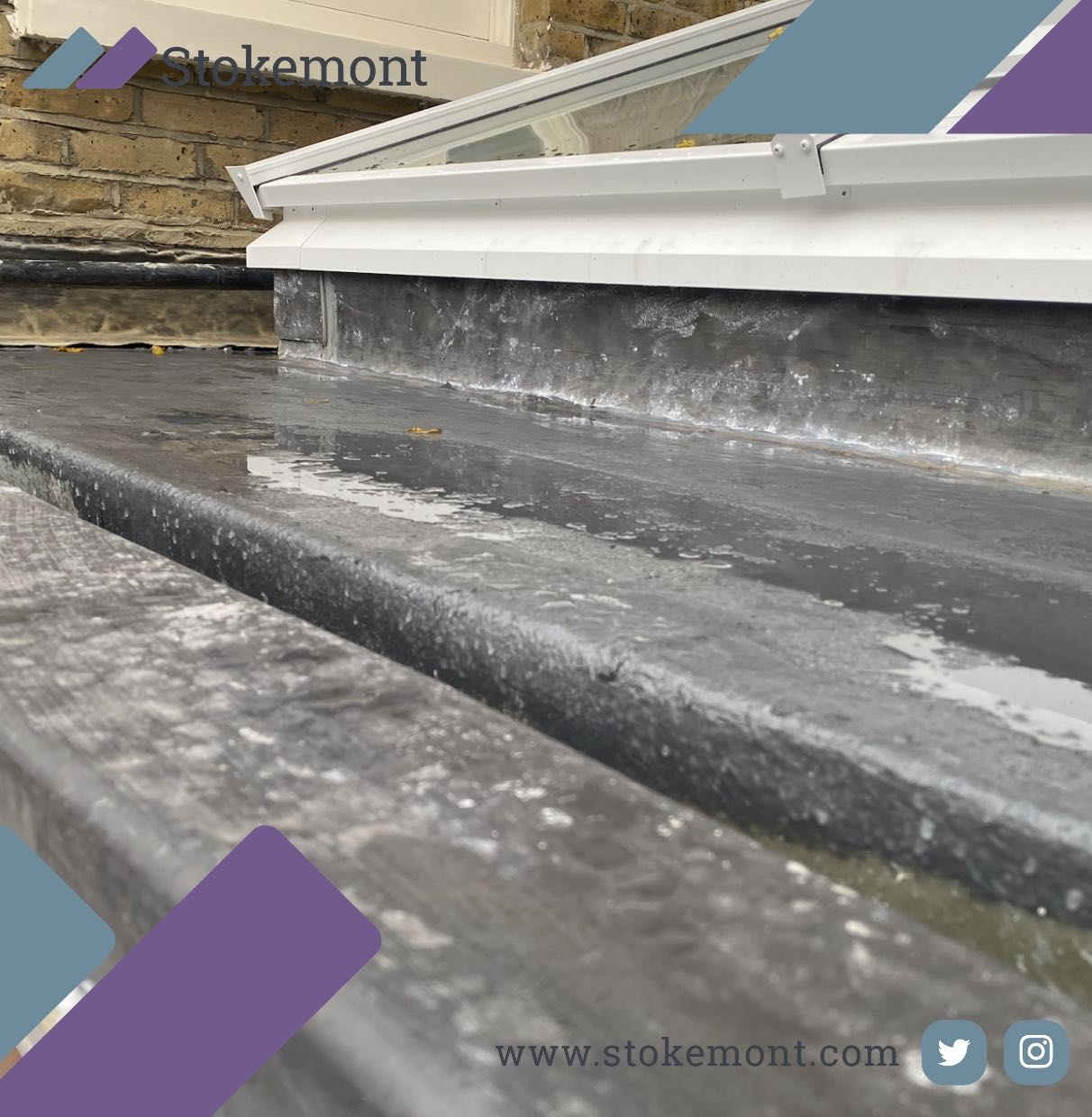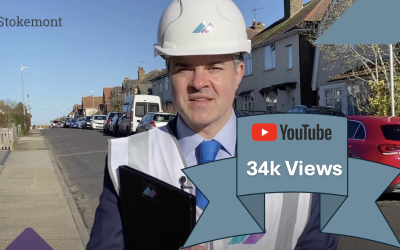In this week’s property surveying blog post topic we will be looking at Glass Reinforced Plastic Roofs (GRP) in greater detail and why they’re so desired in this new day and age.
What Exactly is a GRP Roof?
Glass Reinforced Plastic, also known as a GRP roof, or simply as Fibreglass roofs, is recognised for being robust in its waterproofing ability, its lightweight and for being both corrosion and temperature resistant. It is flexible, so it’s easily moulded for complex shapes and structures, it can be also extremely cost effective compared to traditional building materials and generally has a long life span.
GRP consists of two layers of catalysed thermosetting resins, sandwiching a layer of fine fiberglass to form a GRP laminate. A top coat resin is then applied to weatherproof the surface and give it a more striking finish.
The use GRP dates back to the 1940’s where it was heavily utilised within the marine industry for boat construction. Once the materials marvel attributes were recognised, it was soon in demand across a variety of industries including automotive, construction, water tank building and flat roofing.
Key points to know about GRP Roofs
GRP roofs are quite complex in their form, so if the interim steps taken aren’t adequate, the outcome of the finished product will very much mirror that, making sure an experienced roofer is appointed to complete the install, as experience and know how is key to having an adequate and sound Glass Reinforced Roof installed.
Weather Conditions
When having a GRP roof installed, it’s probably best to plan to have this done in mild conditions, generally speaking, the warmer times of the year would be best fitting as adverse winter weather can cause many setbacks and delays.
Given the chemicals and materials necessary to create the perfect mixture, A GRP Roof must be laid in dry, mild conditions as wet weather will not allow the mixture to cure. Its strongly advised that the roof shouldn’t be laid in conditions too frosty or likewise too warm. Temperatures under 5 degrees Celsius or above 35 degrees Celsius are to be avoided as the mixture will not cure adequately.
In adequate weather, it generally takes 30-40 minutes for a roof to fully cure, so if you find your roof is taking days or weeks you should question whether or not something has gone wrong in the procedure.
GRP Roofs, a few key points to note:
- The final layer of topcoat for the roof shouldn’t be applied after 2pm during winter unless the weather is clear, bright, and not too cold. Once the sun sets it will be difficult for the materials to cure.
- If it begins to rain you should halt the application of any of the layers in relation to the GRP and the exposed roof must covered until more adequate weather.
I recently visited a site in prime London where a GRP roof had been laid a few days prior. As we were appointed to inspect this roof, we gained access to the roof and we were quickly met with a wet, sticky and slippery surprise which caused us to leave footprints in the newly laid topcoat which of course would have had to be re-laid, furthermore, we ended up leaving us with permanent staining to our clothing.
This result could have been caused by two things, poor weather ,as it had been consistently raining the coming days before, or an inadequate mix by the roofer appointed.
Waterproofing Ability
GRP is well known for its ability to be successfully water-resistant against the most adverse weather conditions. This will be down to the material and also due to the design being very flush. Seams and joints, which you would find in felt roof coverings doesn’t happen to be a flaw present with GRP roofs.
As suggested at the beginning of this blog, Glass Reinforced Plastic historically was commonly used for boats to begin with. The boat hull section is commonly constructed out of GRP which should provide you with a great indication into how water tight the material actually is. It’s very rare to obtain defects such as a leak by using GRP if adequately installed and cured. Today, GRP is still commonly used for boats and bigger endeavours such as Yachts.
Durability
Glass Reinforced Plastic as a material, with a well applied top coat, is generally speaking resilient in its form. The material isn’t affected by the burdens of adverse weather, so in the summer months when there’s excessive heat, the material would hold firm and wont melt, shrink or undulate as its extremely resistant to UV damage.
Likewise, in the winter months, frost, snow or heavy rain won’t deform the material and it’s also very unlikely to develop moss.
GRP is prone to easy cracking, so examples such as dropped tools from a constructor or fallen debris wouldn’t easily damage GRP.
GRP can actually cope with a reasonable amount of footfall, thus making it a suitable roof covering for a frequently used terrace.
Lastly, as GRP is made from thermosetting resin , it’s by default prone to melting under high heat so the material is also fire resistant.
Low Maintenance
A key benefit is the maintenance of a GRP roof, although it’s a more expensive choice as a material and installation to begin with, the cost in a long run is much less, as maintenance is somewhat simple in comparison to the alternatives.
Simply giving the roof a brush and a hose down every so often will keep the already aesthetically pleasing material more of a finer finish and also a longer lifespan. As a result, this means that over the years, the chances of the need for repairs are very slim, furthermore, as previously suggested, most warranties should cover you for up to 10- 20 years should anything go wrong, in turn more capital will be saved.
The foremost issues with the alternative flat roof’s materials , such as; rubber and bitumen are that joints and seams are present. These overtimes are prone to seasonal movement, faults, defect, where water ingress occurs and slowly the roof deteriorates will need to be replaced.
There are categorically no seams, joints, or weak spots within an adequately installed GRP roof, just a single, flush surface for rain to run off.
If you are planning on carrying out any construction works and have been having difficulties selecting a roof, I hope this blog has provided a good insight into the possibilities of utilising a Glass reinforced plastic flat roof.
If you have managed to obtain any damage to your roof, or structure and can’t seem to figure out the cause, feel free to give us a call today and we can assess this via a Defect Analysis.




